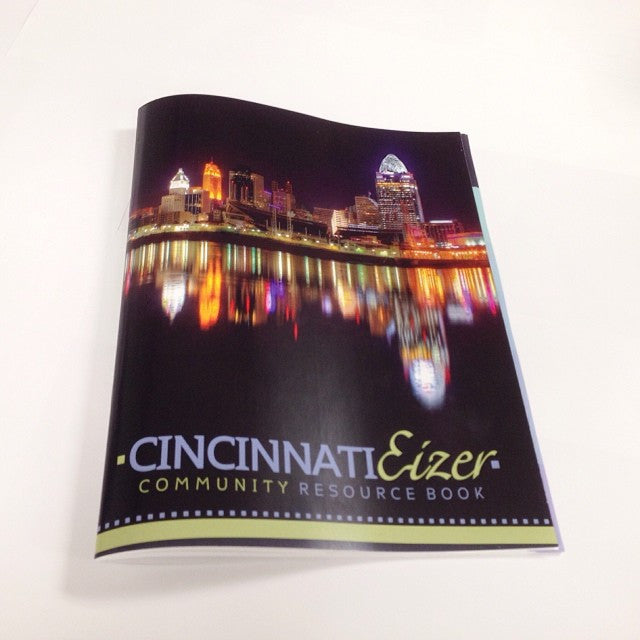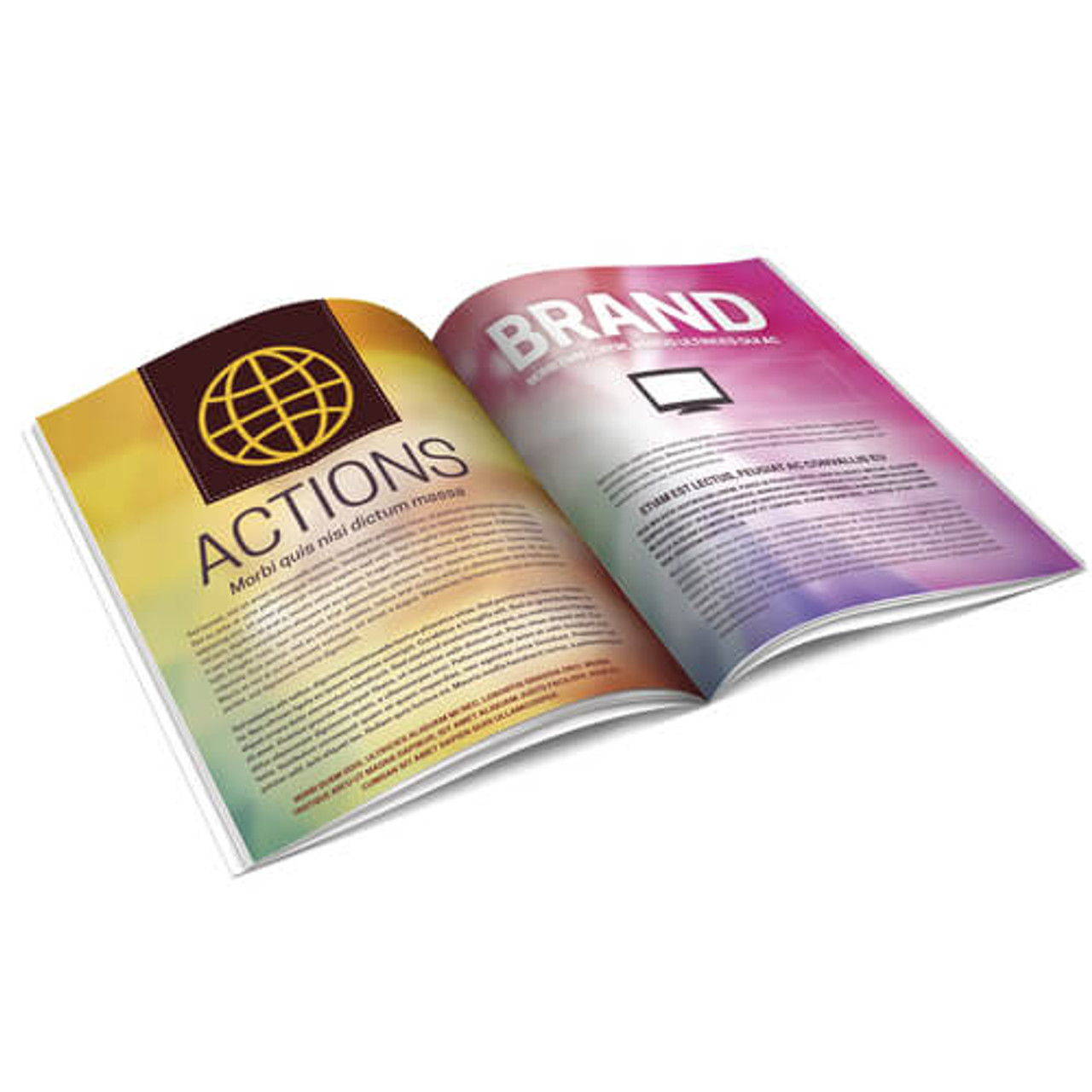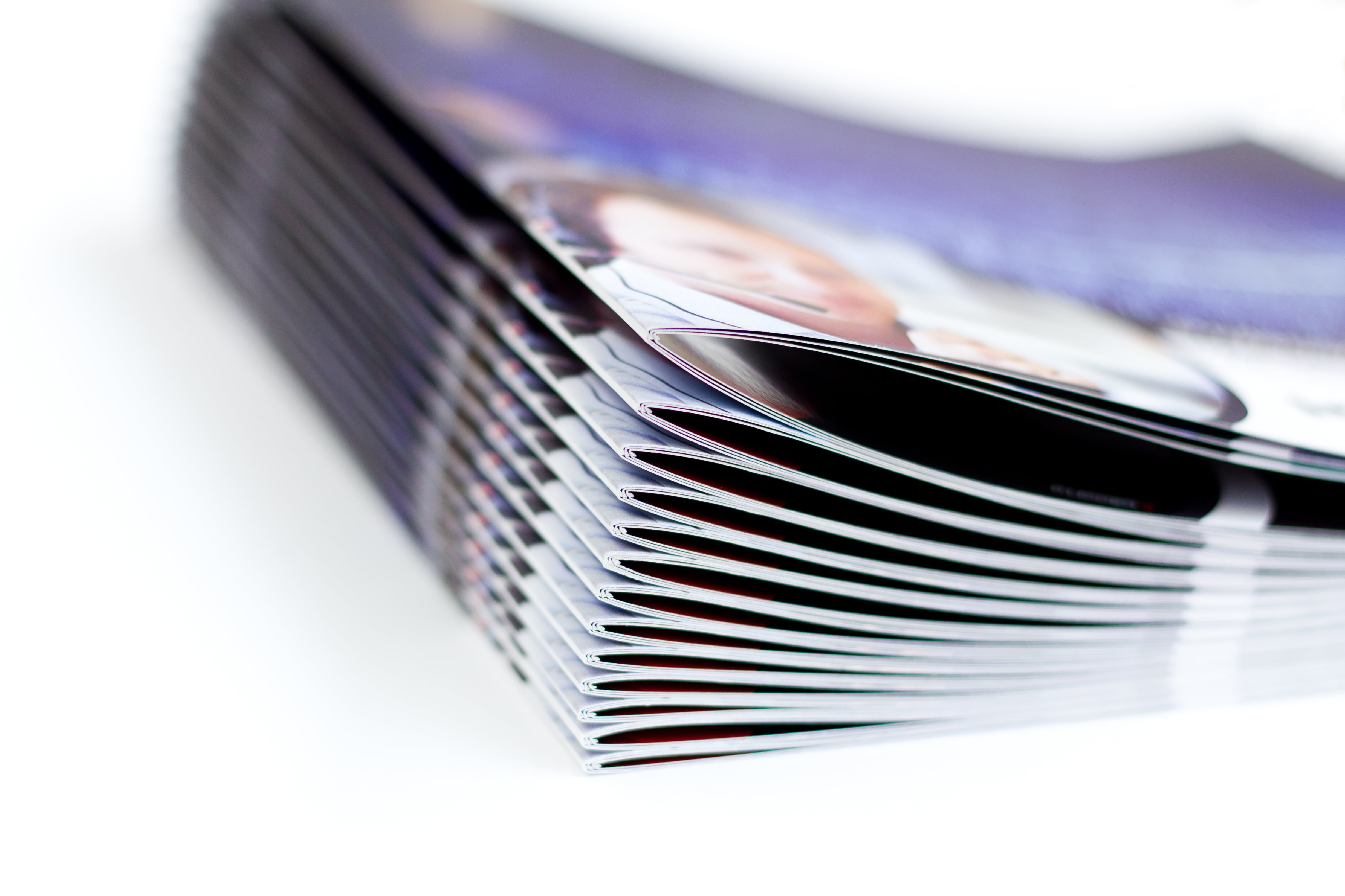The Crucial Guide to Recognizing Pamphlet Printing Options and Techniques
The process of pamphlet printing entails several considerations that can considerably influence the final item. From picking the ideal layout and dimension to recognizing the subtleties of binding approaches, each option plays a necessary function. In addition, elements such as paper stock and printing methods additional influence the performance of the pamphlet. As one navigates these alternatives, it ends up being important to comprehend exactly how they adjoin and what that indicates for the overall result.
Recognizing Brochure Layouts and Sizes
When considering brochure printing, comprehending the numerous layouts and dimensions readily available is necessary for achieving the desired presentation. Brochures can be generated in countless formats, consisting of saddle-stitched, spiral-bound, and perfect-bound, each offering distinct advantages. Common sizes range from conventional letter (8.5 x 11 inches) to smaller sized alternatives like A5 (5.8 x 8.3 inches), permitting for versatility based on web content and target audience.Selecting the suitable dimension can affect both the format and viewers interaction. Larger sizes may suit aesthetically driven content, while smaller sized styles might be extra portable and user-friendly. Furthermore, the variety of pages affects the selection of binding approach, as thicker pamphlets might require stronger bindings. Ultimately, understanding these facets permits a more tailored technique, making certain that the final product straightens with the designated message and visual, boosting the overall performance of the communication.
Choosing the Right Paper Stock

Binding Techniques: Factors To Consider and options
When it comes to binding approaches for brochures, numerous alternatives are readily available, each with distinctive advantages. Saddle stitch binding uses an economical option for thinner pamphlets, while perfect binding techniques offer an even more polished seek thicker magazines. Wire-O binding attracts attention for its durability and simplicity of usage, making it excellent for records that need adaptability.
Saddle Stitch Binding
Saddle stitch binding offers a functional and economical remedy for setting up pamphlets, making it a popular option among services and authors. This binding technique entails folding sheets of paper in fifty percent and stapling them along the fold line, producing a neat and orderly appearance. Commonly ideal for brochures with a reduced web page matter, saddle sewing is suitable for magazines, sales brochures, and instructional materials. The simplicity of this method permits fast manufacturing and is usually favored for marketing items or brief runs. It is important to keep in mind that saddle stitch binding may not be suitable for thicker pamphlets, as the spine might not hold up under boosted weight. In general, it stays a reliable option for lots of printing tasks.
Perfect Binding Methods
Perfect binding is a widely made use of strategy that provides a polished and professional surface to magazines and booklets. This method includes gluing the pages with each other at the spine making use of a solid adhesive, permitting for a tidy edge and the capability to hold a larger number of web pages compared to saddle sewing. Perfect binding is particularly suitable for thicker pamphlets, such as brochures and yearly reports, where a sturdy, flat spine is preferred. Furthermore, it provides the choice for a printed cover that can be created to boost visual allure. Considerations such as page matter, paper weight, and the meant use of the brochure ought to be taken right into account, as they can impact sturdiness and overall quality.
Wire-O Binding Options
Wire-O binding, understood for its toughness and versatility, uses an outstanding option for brochures that need simple web page turning and a specialist appearance. This binding technique employs a series of metal loops that hold pages firmly, permitting them to lie level when open. It is particularly ideal for handbooks, catalogs, and presentations because of its durable nature. Wire-O binding is available in various colors and diameters, fitting various web page matters and thicknesses. Furthermore, it permits the incorporation of covers and tabs, boosting the booklet's total visual. Factors to consider for Wire-O binding consist of the selection of cord color, the dimension of the loopholes, and the level of personalization desired, every one of which can greatly influence the last product's appearance and capability.
Digital vs. Offset Printing: Which Is Best for You?
When picking a printing technique for pamphlets, understanding the distinctions in between electronic and counter printing is crucial. Digital printing utilizes contemporary innovation to create high-grade prints promptly and affordably, making it ideal for brief runs or tasks needing fast turn-around times. It enables for personalization, giving the capability to publish on-demand with very little waste.In contrast, counter printing is a traditional approach that stands out in producing huge quantities with consistent quality. It includes moving ink from a plate to a rubber covering, after that to the paper, which causes vibrant colors and precise details. Offset printing normally calls for longer setup times and is more affordable for bigger volumes.Ultimately, the selection between digital and counter printing depends on project demands, spending plan, and wanted amount. For small, time-sensitive projects, digital could be the most effective selection, while balanced out may be more effective for larger, premium manufacturings.

Designing Your Pamphlet: Tips and Finest Practices
When developing a pamphlet, careful focus to layout, font selection, and shade use can greatly enhance its performance. A well-structured design guides the reader's eye, while appropriate font styles assure readability and share the preferred tone. Additionally, reliable use of color can stimulate emotions and highlight key details, click for source making the total design extra impactful.
Choosing the Right Format
How can one successfully choose the right layout for a pamphlet? Initially, it is vital to evaluate the booklet's objective and target market. A clean, arranged format enhances readability and involvement. Using a grid system can help in lining up aspects consistently, producing a specialist appearance. Furthermore, incorporating aesthetic pecking order through varying dimensions and positionings of photos and text can lead the reader's eye and stress vital info. It is likewise vital to leave enough white space, which prevents congestion and permits far better emphasis. Finally, testing various layouts through mock-ups can give insight into just how the design executes in real-world circumstances, making sure that the end product fulfills both practical and aesthetic demands.
Picking Suitable Font Styles
A well-chosen font can significantly boost the general style of a booklet, matching the layout and strengthening the material's message. The selection of font styles ought to consider readability, specifically for body text, as it guarantees the information comes to all readers. Sans-serif typefaces are commonly preferred for digital layouts, while serif typefaces can provide a traditional feeling in published products. It's suggested to limit font options to 2 or three to preserve visual coherence. Additionally, font style dimension plays an important role; headings ought to be not frustrating yet distinctive, while body message need to be comfy for analysis. When choosing font styles, alignment with the pamphlet's motif and target market is important for reliable communication and aesthetic charm.
Reliable Use of Shade
Color offers as an effective tool in pamphlet style, assisting and shaping perceptions reader emotions. It can evoke feelings of exhilaration, calmness, or count on, depending upon the hues picked. Developers need to think about shade theory principles, making sure that the picked palette straightens with the booklet's message and target market. As an example, making use of warm colors like red and orange can create urgency, while cooler tones like blue you could try these out and eco-friendly foster tranquility.Additionally, comparison plays an essential role; complementary colors can boost readability and visual charm. Uniformity in shade usage across pages better reinforces brand identity and cohesion. Eventually, effective shade implementation not only captures attention but also strengthens the booklet's function, making it a crucial element of effective layout.
Finishing Touches: Coatings and Unique Effects
While several take into consideration the material and format of a brochure one of the most essential components, the finishing touches, such as finishings and unique impacts, play an essential role in enhancing its general appeal. Coatings can supply defense and resilience, making certain that the pamphlet endures wear and tear. Matte surfaces offer an innovative, non-reflective surface area, while shiny coatings can make shades appear more appealing and lively. Special impacts, like embossing or aluminum foil stamping, include a tactile dimension that can develop a remarkable perception. These techniques can highlight specific areas, accentuating essential details or producing aesthetic passion. Additionally, UV coating can provide a high-shine surface that boosts the total look.Together, these finishing touches not just enhance the booklet's aesthetic but likewise interact professionalism and trust and attention to detail, ultimately leaving a long-term influence on the visitor.
Cost Factors To Consider for Pamphlet Printing
Understanding the various cost factors to consider for pamphlet printing is essential for services and companies aiming to optimize their spending plans. Key aspects influencing costs consist of the choice of binding, paper, and ink approaches. Higher top quality materials, such as exceptional paper or specialized inks, typically raise the overall cost. Additionally, the dimension and page count of the brochure play a substantial duty; bigger brochures require even more resources and time to produce.Another crucial consideration is the printing method, whether electronic or balanced out, as each has its own pricing structure and suitability for different amounts. Services ought to additionally factor in style costs, which can differ based on complexity and the usage of professional services. Ultimately, shipping and handling fees can contribute to the overall, specifically for large orders. By evaluating these aspects, organizations can make enlightened choices that straighten with their economic capabilities while attaining the preferred top quality in their printed materials.
Often Asked Inquiries
What Are the Environmental Effects of Brochure Printing?
The environmental impacts of brochure printing include logging from paper manufacturing, carbon exhausts from transportation, and waste generation from thrown out materials - Booklet Printing. Lasting methods, such as using recycled paper and environmentally friendly inks, can minimize these impacts
How Can I Make Sure Shade Precision in My Pamphlet?
To assure color accuracy in a brochure, one need to make use of calibrated displays, utilize professional color profiles, carry out examination prints, and pick high-grade printing services that offer shade matching and proofing options for ideal outcomes.
What Is the Regular Turn-around Time for Brochure Printing?
The typical turn-around time for pamphlet printing differs depending upon the complexity and amount - Booklet Printing. Generally, it ranges from a couple of days to two weeks, influenced by variables such as printing approaches and ending up needs
Exist Minimum Order Quantities for Brochure Printing?

Can I Publish Brochures in Numerous Languages?
Printing pamphlets in several languages is possible. Lots of printing services offer alternatives for multilingual or multilingual formats, permitting efficient interaction. Careful planning assurances that develop components accommodate various languages without endangering readability or looks. In addition, variables such as paper supply and printing techniques further influence the performance of the pamphlet. When taking into consideration brochure printing, understanding the various styles and sizes available is vital for accomplishing the wanted presentation. When choosing a printing approach for pamphlets, comprehending the differences in between electronic and counter printing is vital. Furthermore, the dimension and page matter of the booklet play a significant function; larger pamphlets call for even more sources and time to produce.Another important factor to consider is the printing strategy, whether electronic or countered, as each has its very own pricing framework and viability for various amounts. The environmental influences of pamphlet printing consist of deforestation from paper production, carbon emissions from transportation, and waste generation from disposed of materials.